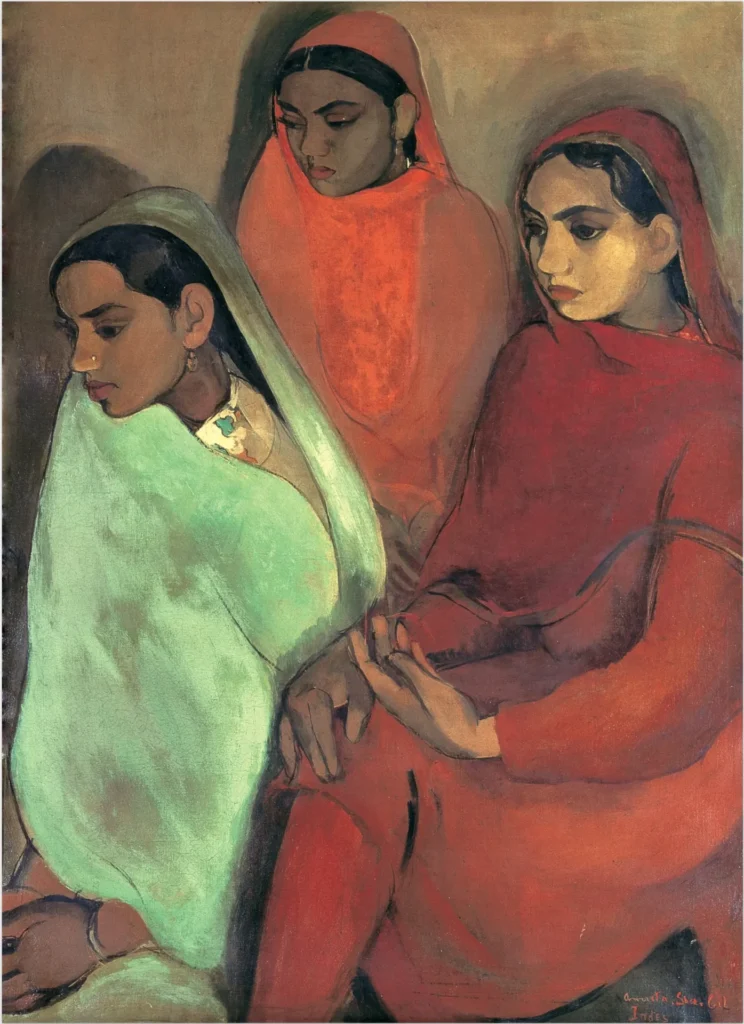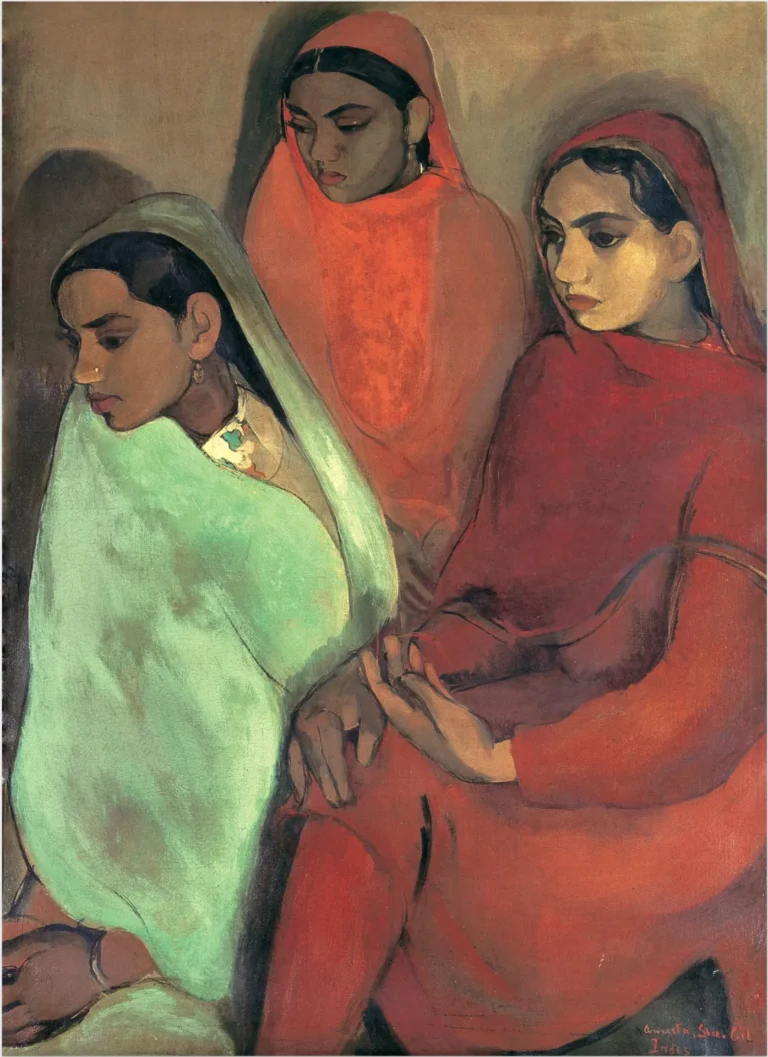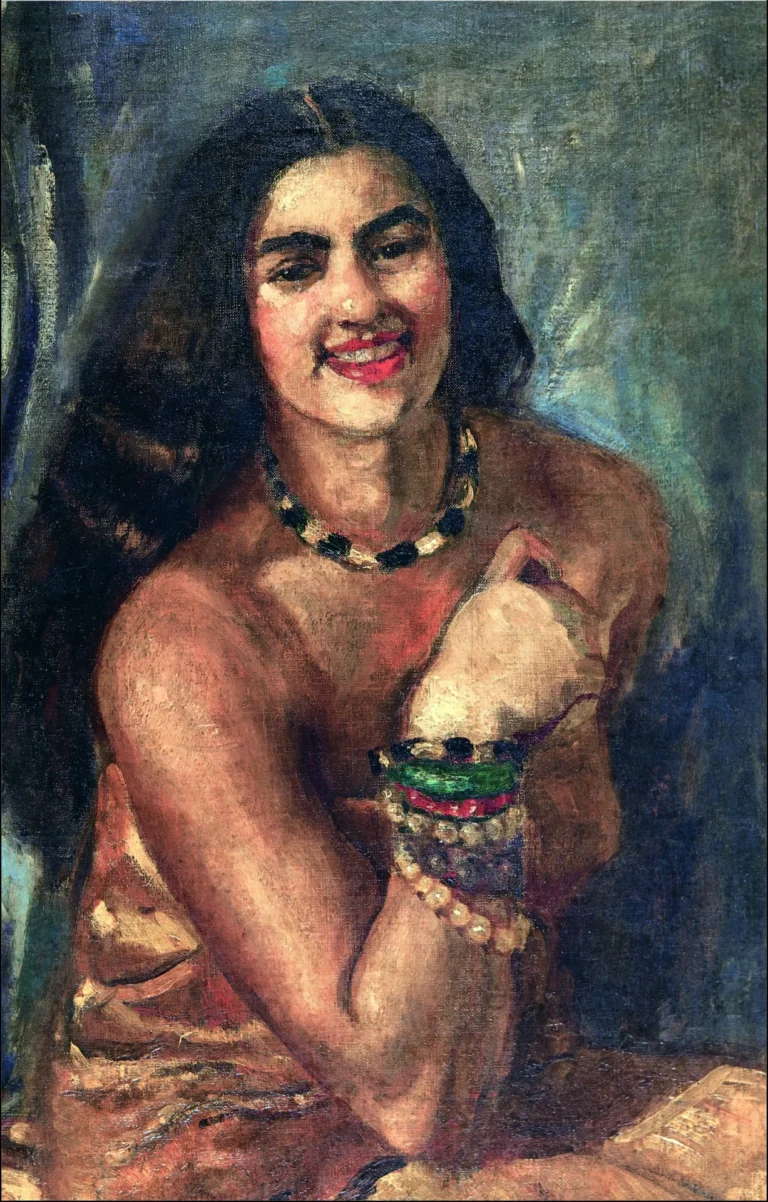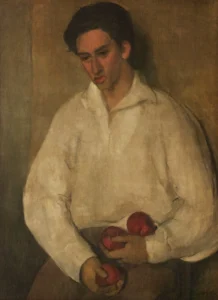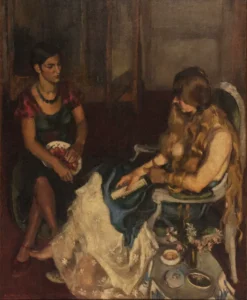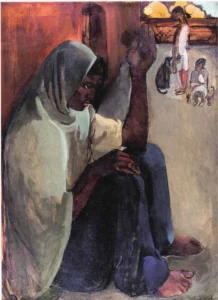Group of three girls
Amrita Sher-Gil's Group of three girls captures the intimate representation of three teenage sisters—Nirveer, Beant, and Harbhajan—against a backdrop of cultural expectation and resignation. Painted in 1935, it showcases Sher-Gil's masterful use of color and form, influenced by French techniques, to convey the girls' subdued emotions and their struggles within a patriarchal society. The work resonates deeply with themes of identity and cultural duality, making it a pivotal piece in modern Indian art.
1935
About the Artwork
Created shortly after her return to India, Group of three girls reflects Amrita Sher-Gil's profound engagement with her homeland’s cultural and social fabric. The three sisters, family members of the artist, embody the sentiments that Sher-Gil felt as she reconciled her European training and Indian heritage. Here, the girls’ expressions and postures speak volumes of the societal expectations they grapple with, representing a broader commentary on the condition of Indian women in the early 20th century. Celebrated at its first exhibition, the painting transcends the mere depiction of subjects; it resonates with the artist's own struggle between two worlds, enriching the narrative of Indian femininity.
Did You Know
Sher-Gil’s unique identity as a Hungarian-Indian artist allowed her to incorporate diverse influences into her works, blending Western techniques with Indian themes, which is beautifully embodied in this painting.
Group of three girls won the prestigious Gold Medal at the Bombay Art Society’s annual exhibition in 1937, underlining its impact and significance in Indian modern art.
The subjects of the painting are Sher-Gil’s own relatives, specifically the daughters of her first cousin, showcasing her deep personal connection to the themes of familial bonds and women’s experiences in her art.




